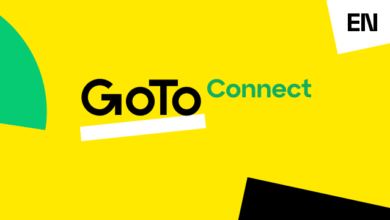technology examples: A Look Into Everyday Innovations That Changed Our Lives

Technology example isn’t just a buzzword thrown around in sci-fi movies or tech summits—it’s all around us. From the phone in your hand to the GPS that got you to your destination, technology touches every part of our lives. technology examples But what exactly counts as “technology”? And what are some real-world technology examples that shape our everyday experiences?
In this article, we’ll explore different types of technology examples—some common, some cutting-edge—and explain how they function in our modern world. So,technology examples whether you’re a curious reader or someone trying to understand how things work, you’re in for a tech-savvy ride.
1. Information Technology (IT): The Backbone of the Digital Age

Information Technology is one of the most commonly referred types of technology today. It deals with anything involving computers, software, networks, and data management. technology examples Essentially,
it’s the invisible machinery behind how we communicate, store information, and access services digitally.
Take cloud computing for example. technology examples It’s a buzzword you’ve probably heard, but it’s also a revolutionary piece of IT.
| technology examples |
Cloud platforms like Google Drive or Dropbox allow us to store and retrieve data from anywhere. Gone are the days of USB drives and bulky external hard disks—now your documents are just a login away.
Another powerful example is cybersecurity technology. With more of our lives being digital, keeping information secure has become crucial. Antivirus software, two-factor authentication, and firewalls are just a few of the many technologies that protect users and organizations from cyber threats. technology examples It’s IT in action, quietly safeguarding your online presence.
Let’s not forget software development tools. Developers use coding platforms like GitHub, IDEs (Integrated Development Environments), and testing software to build the apps and websites we rely on every day. Whether it’s your favorite social media platform or your online bank, IT is behind its creation and maintenance.
2. Communication Technology: Connecting People Across the Globe
The way we communicate has changed drastically in the past few decades, thanks to groundbreaking technology. Once upon a time, we waited days—or weeks—for letters to arrive. Today, we can video call someone across the globe in real-time,
| technology examples |
all thanks to communication technology.
Smartphones are the most obvious example
They combine multiple communication tools—calls, messaging, video chat, social media—into a compact device. It’s hard to imagine life without them now, isn’t it? Whether you’re texting your friend or attending a Zoom meeting, you’re engaging with communication tech.
Let’s talk about the internet too. This isn’t just a source of entertainment; it’s the platform on which nearly all modern communication depends. Emails, chats, VoIP (Voice over Internet Protocol) services like Skype or WhatsApp—all of them use the internet to transmit messages faster than ever before.
Social media platforms are another prime example. Facebook, Instagram, X (formerly Twitter), and LinkedIn have not only revolutionized how we interact socially but also how we network professionally, raise awareness, and even market businesses. It’s communication, upgraded.
3. Medical Technology: Saving Lives, One Innovation at a Time
When we think about technology, we sometimes forget how impactful it is in healthcare. Medical technology has evolved rapidly—from simple thermometers to robotic surgeries. These innovations aren’t just cool—they’re life-saving.
MRI and CT scan machines are excellent examples. These imaging technologies allow doctors to see inside the human body without making a single incision. That means more accurate diagnoses and faster treatments, all while minimizing risk to the patient.
Another powerful example is wearable health tech. Devices like smartwatches can now monitor heart rates, oxygen levels, sleep patterns, and even detect irregular heartbeats. This data can be synced with medical apps and even shared with doctors, allowing early detection of potential health issues.
Let’s not skip over telemedicine. During the COVID-19 pandemic, virtual healthcare became the norm. Patients consulted doctors via video calls, received prescriptions online, and even monitored chronic conditions remotely.technology examples This wouldn’t have been possible without robust medical communication tech and secure health platforms.
4. Transportation Technology: Moving Us Forward—Literally
Getting from point A to point B has never been easier—or more advanced. Transportation technology has drastically evolved, and we benefit from it every time we hop into a car, board a plane, technology examples or use ride-sharing apps.
Take electric vehicles (EVs), for example. Brands like Tesla, Rivian, and Lucid Motors are not just producing cars; they’re reshaping the auto industry. These vehicles are powered by batteries, emit no exhaust, and are often packed with smart features like autopilot or remote diagnostics.
Public transportation tech is also worth noting. Smart cards, automated ticketing, and real-time tracking apps make commuting smoother for millions of people every day. In some countries, technology examples high-speed trains reach speeds of 200+ mph—all controlled by sophisticated engineering systems.
Let’s not forget about aviation technology. From autopilot systems to advanced radar and communication tools, airplanes today are safer and more efficient than ever before. Plus, with the upcoming potential of flying taxis and space travel, transportation tech might just take us into the future sooner than we think.
5. Household Technology: Making Life Convenient and Comfortable
Technology isn’t just found in labs and offices—it’s right in our homes. Household technology ranges from smart gadgets to everyday appliances that make life easier, safer, and more enjoyable.
Smart home systems like Alexa, Google Home, and Apple HomeKit allow you to control lighting, music, thermostats, and even security cameras with your voice or a mobile app. Forgot to lock your door? Just tap a button. Want the lights dimmed? Ask your smart speaker.
Kitchen tech is another big area.
From air fryers to smart fridges that can track your groceries and suggest recipes, cooking has become more efficient than ever. Some ovens can even be controlled remotely—so you can preheat while you’re still at work.
Let’s talk about cleaning tech too. Robotic vacuum cleaners, like Roomba, navigate your floors using sensors and AI. They clean on schedule, avoid obstacles, and some even empty themselves. Laundry machines, dishwashers, and even smart mirrors are just more ways technology quietly improves our lives at home.
6. Entertainment Technology: Fun Meets Innovation
Entertainment is where creativity and technology often collide in the most spectacular ways. From the movies we watch to the games we play, tech is what makes the magic happen.
Streaming platforms like Netflix, Spotify, and YouTube have completely changed how we consume media. Instead of buying DVDs or CDs, everything is now on-demand.
The technology behind these services includes cloud storage, high-speed servers, recommendation algorithms, and adaptive streaming that adjusts to your internet speed.
Gaming is another area booming with innovation. Consoles like the PlayStation 5 or Xbox Series X offer hyper-realistic graphics, lightning-fast performance, and online multiplayer capabilities. Virtual Reality (VR) gaming has taken this even further—immersing players in 3D worlds where they can interact in real-time.
Even traditional media has adapted. Live television is now accessible via smart TVs and mobile apps. Augmented reality filters on Instagram and Snapchat offer fun,
| technology examples |
tech-powered experiences. It’s not just entertainment—it’s an evolving blend of art, data, and software engineering.
7. Educational Technology: Learning Beyond the Classroom
The classroom has undergone a revolution, and educational technology—or EdTech—is leading the way. With tools that make learning more interactive, accessible, and engaging, education is no longer confined to textbooks and chalkboards.
Online learning platforms like Coursera, Khan Academy, and Duolingo allow students to learn at their own pace. These platforms use video tutorials, interactive quizzes, and progress tracking to offer a full classroom experience virtually. It’s education on your schedule.
Smartboards and digital projectors have replaced blackboards in many schools. Teachers now use multimedia tools to enhance lessons with visuals, animations,
and real-time annotations. This not only keeps students engaged but also caters to different learning styles.
Artificial Intelligence (AI) in education is another exciting example. Some EdTech platforms use AI to analyze a student’s performance and offer personalized study plans. This targeted approach helps students improve faster and makes teachers’ jobs easier by automating repetitive tasks like grading.
Conclusion: Technology is Everywhere, and It’s Here to Stay
Technology is not just about flashy gadgets or high-level systems. It’s about solving problems, improving efficiency, and making life better.
| technology examples |
From your smartwatch to electric cars, from virtual classrooms to robotic vacuums—technology is everywhere.
As we continue to innovate, new examples will emerge, and what seems futuristic today might become tomorrow’s norm. So next time you use an app, send a message,
| technology examples |
or stream a movie, take a second to appreciate the tech behind it. technology examples Because chances are, it’s smarter than you think.


